Press Release
MESSENGER Ships to the Cape
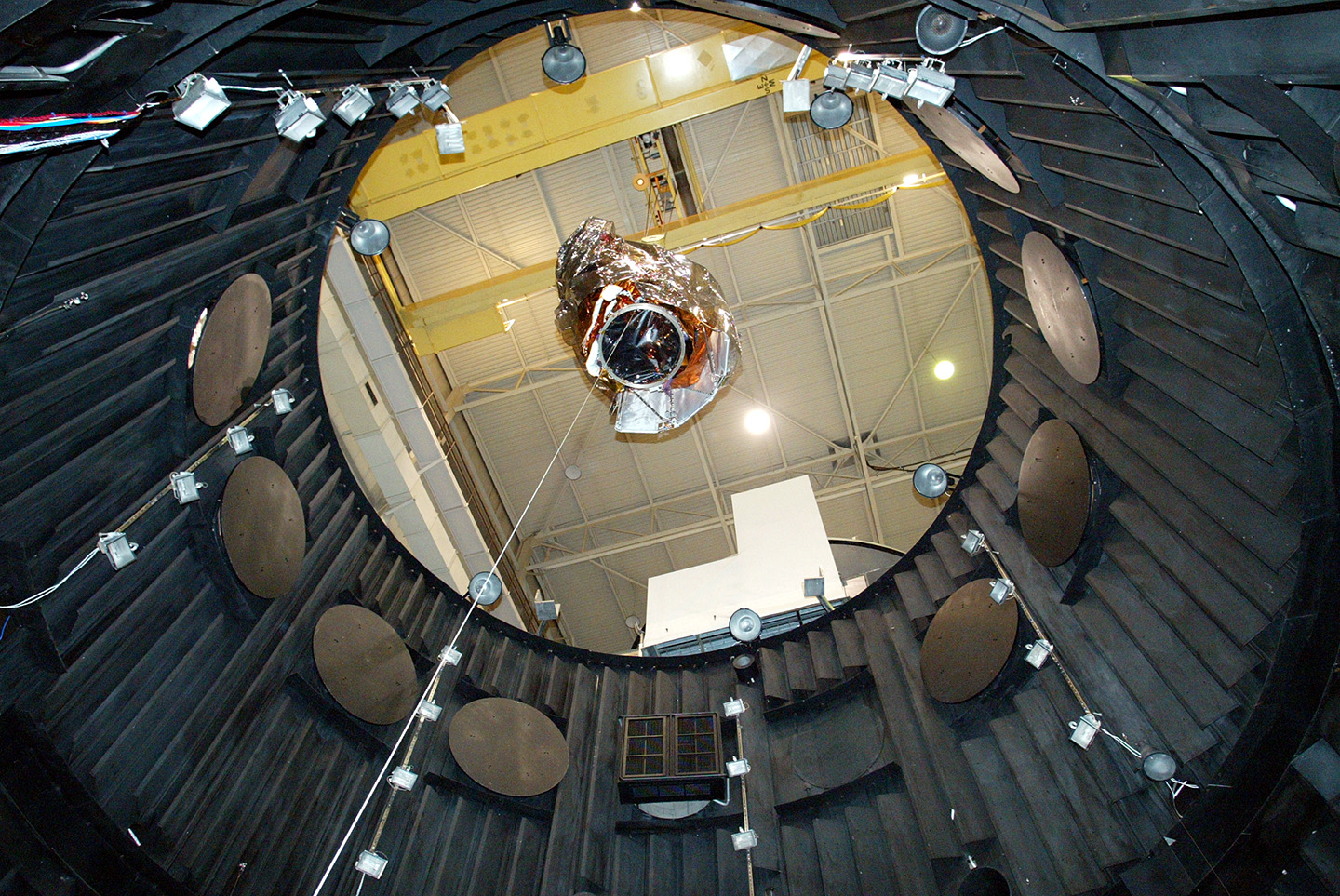
A crane lifts MESSENGER out of the thermal vacuum chamber at NASA's Goddard Space Flight Center on Feb. 26, after the spacecraft completed five weeks of rigorous tests that showed it could withstand the wide range of hot and cold temperatures it will face on its journey to and mission around Mercury. Four of MESSENGER's seven science instruments reside inside the "ring" on the bottom deck of the spacecraft, which also connects MESSENGER to its launch vehicle.
Credit: NASA/Johns Hopkins University Applied Physics Laboratory/Carnegie Institution of Washington
NASA's First Mercury Orbiter Mission Preparing for Summer Launch
NASA's MESSENGER spacecraft left home in Maryland today for Cape Canaveral, Fla., site of its scheduled July launch toward Mercury and the first study of that planet from orbit.
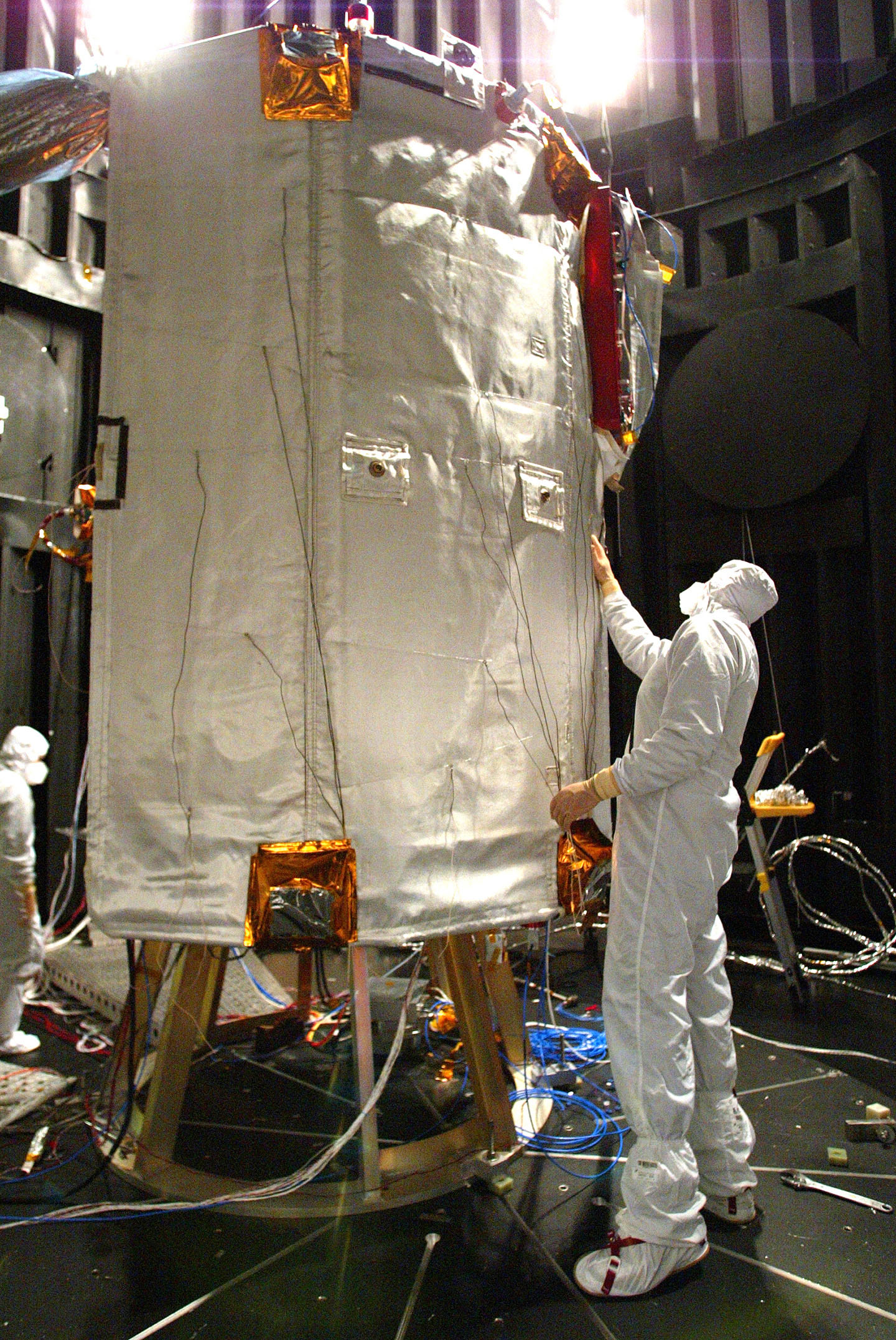
Jack Ercol, MESSENGER lead thermal engineer from The Johns Hopkins University Applied Physics Laboratory, checks the condition of the spacecraft's ceramic-fabric sunshade after testing in the thermal-vacuum chamber at NASA's Goddard Space Flight Center. The tests showed that the sunshade, approximately 8 feet tall and 6 feet wide, will keep MESSENGER's instruments and systems at room temperature while the spacecraft orbits the planet closest to the Sun.
Credit: NASA/Johns Hopkins University Applied Physics Laboratory/Carnegie Institution of Washington
Secured in an air-conditioned moving van, MESSENGER set out from NASA's Goddard Space Flight Center in Greenbelt on March 9 and reached Kennedy Space Center/Cape Canaveral Air Force Station the next day. MESSENGER — short for MErcury Surface, Space ENvironment, GEochemistry, and Ranging — spent the past three months being baked, frozen, spun, shaken and probed in Goddard's test facilities, experiencing the conditions of launch and its upcoming five-year journey to the innermost planet.
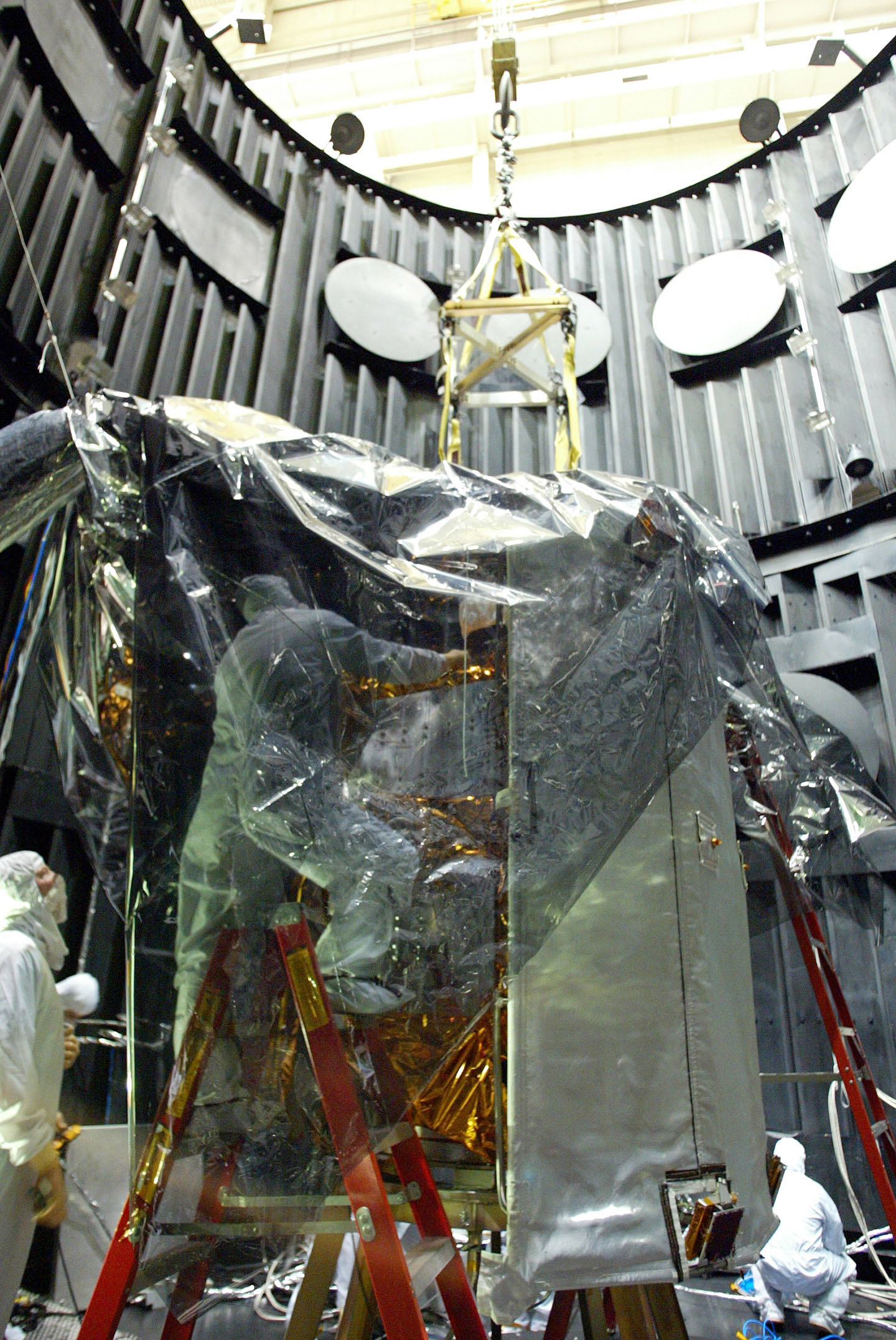
Engineers wrap the MESSENGER spacecraft in protective film before lifting it out of the thermal-vacuum chamber at NASA's Goddard Space Flight Center on Feb. 26. The spacecraft endured five weeks of rigorous environmental tests in the chamber, including some where engineers baked the sunshade to about 350 degrees Celsius (about 660 degrees Fahrenheit). MESSENGER showed it could withstand the wide range of hot and cold temperatures it will face on its journey to and mission around Mercury.
Credit: NASA/Johns Hopkins University Applied Physics Laboratory/Carnegie Institution of Washington
Over the next several weeks, engineers from The Johns Hopkins University Applied Physics Laboratory (APL) in Laurel, Md., where MESSENGER was designed and built, will prepare the spacecraft for launch at the Astrotech Space Operations facility near Kennedy Space Center. Other team members will continue to test the spacecraft's key operating systems remotely from the MESSENGER Mission Operations Center at APL.
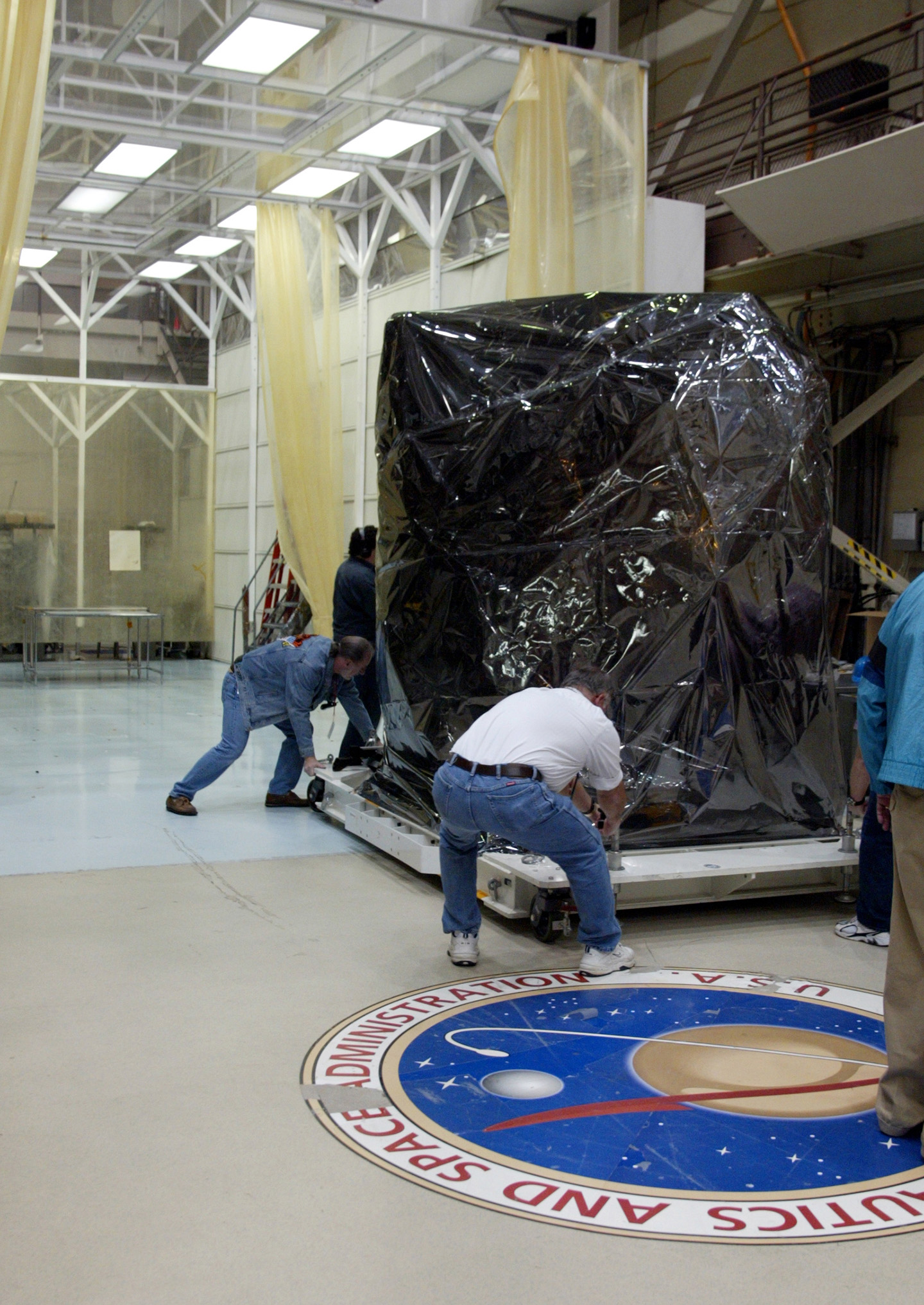
Team members move the MESSENGER spacecraft, wrapped in protective film, out of its temporary clean room March 9 at the NASA Goddard Space Flight Center in Greenbelt, Md., toward the large moving van that will carry it to Kennedy Space Center/Cape Canaveral Air Force Station, Fla., site of its scheduled July 2004 launch toward the first study of the planet Mercury from orbit.
Credit: NASA/Johns Hopkins University Applied Physics Laboratory/Carnegie Institution of Washington
Set for a predawn launch aboard a Boeing Delta II rocket, during a 15-day launch period that opens July 30, MESSENGER will fly past Earth once, Venus twice and Mercury three times before starting its yearlong orbital study of Mercury in March 2011. The Earth flyby in July 2005 and the Venus flybys in October 2006 and June 2007 use the planets' gravity to guide MESSENGER toward Mercury's orbit. Mercury flybys in January 2008, October 2008 and September 2009 further tune MESSENGER's path and allow the spacecraft to gather data critical to planning the mission's orbital phase.
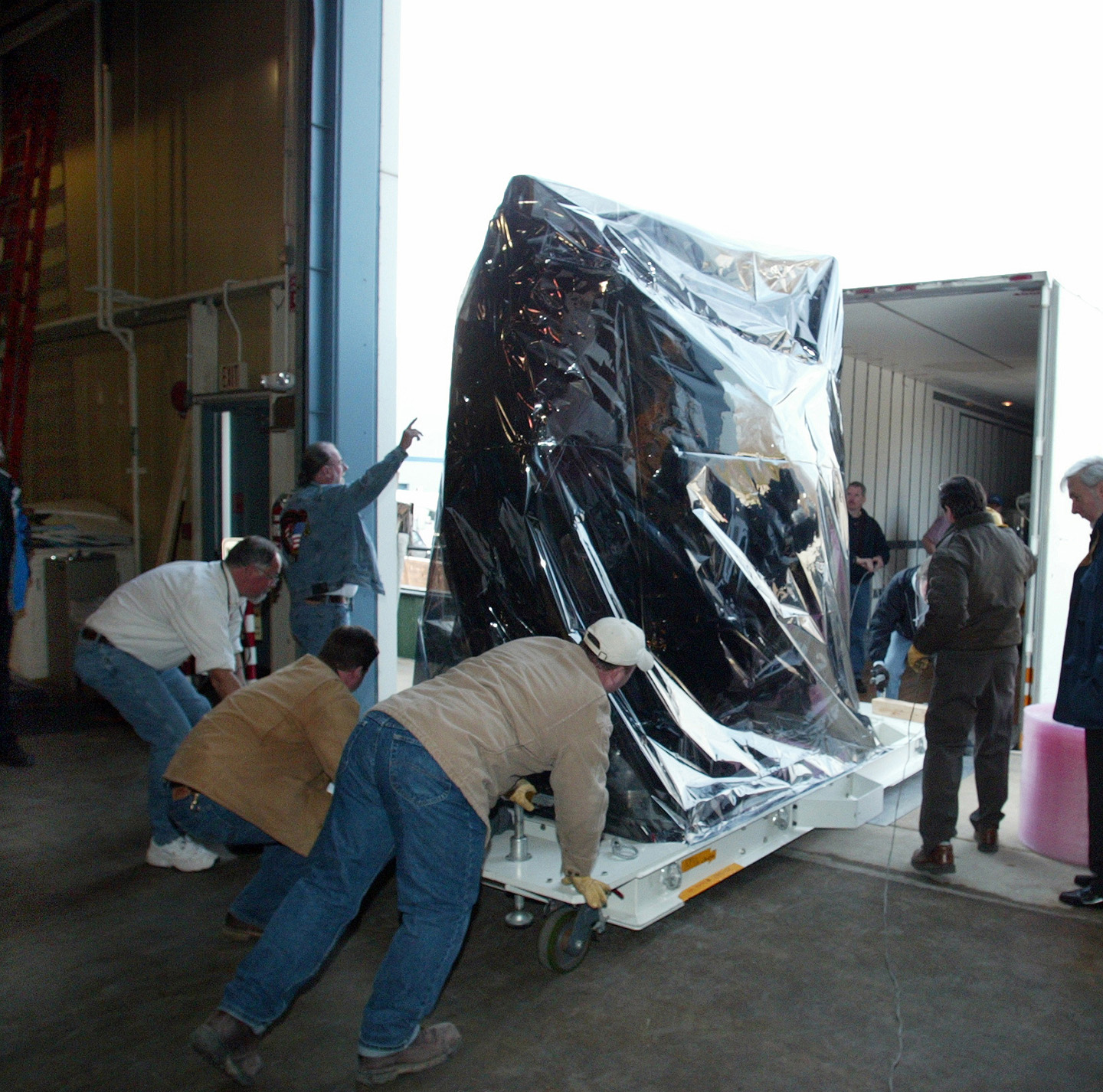
Wrapped in protective film, the MESSENGER spacecraft is loaded into a moving van March 9 at the NASA Goddard Space Flight Center in Greenbelt, Md. for the drive to Kennedy Space Center/Cape Canaveral Air Force Station, Fla., site of its scheduled July 2004 launch toward the first study of the planet Mercury from orbit.
Credit: NASA/Johns Hopkins University Applied Physics Laboratory/Carnegie Institution of Washington
The compact 1.2-ton spacecraft features several defenses against the intense heat and bright sunlight at Mercury, including a ceramic-fabric sunshade and a heat-radiation system. The mission's orbit design will also keep MESSENGER cooler by allowing it to pass only briefly through heat reflecting off the hottest spots on Mercury's surface, where temperatures can exceed 840 degrees Fahrenheit (450 degrees Celsius).
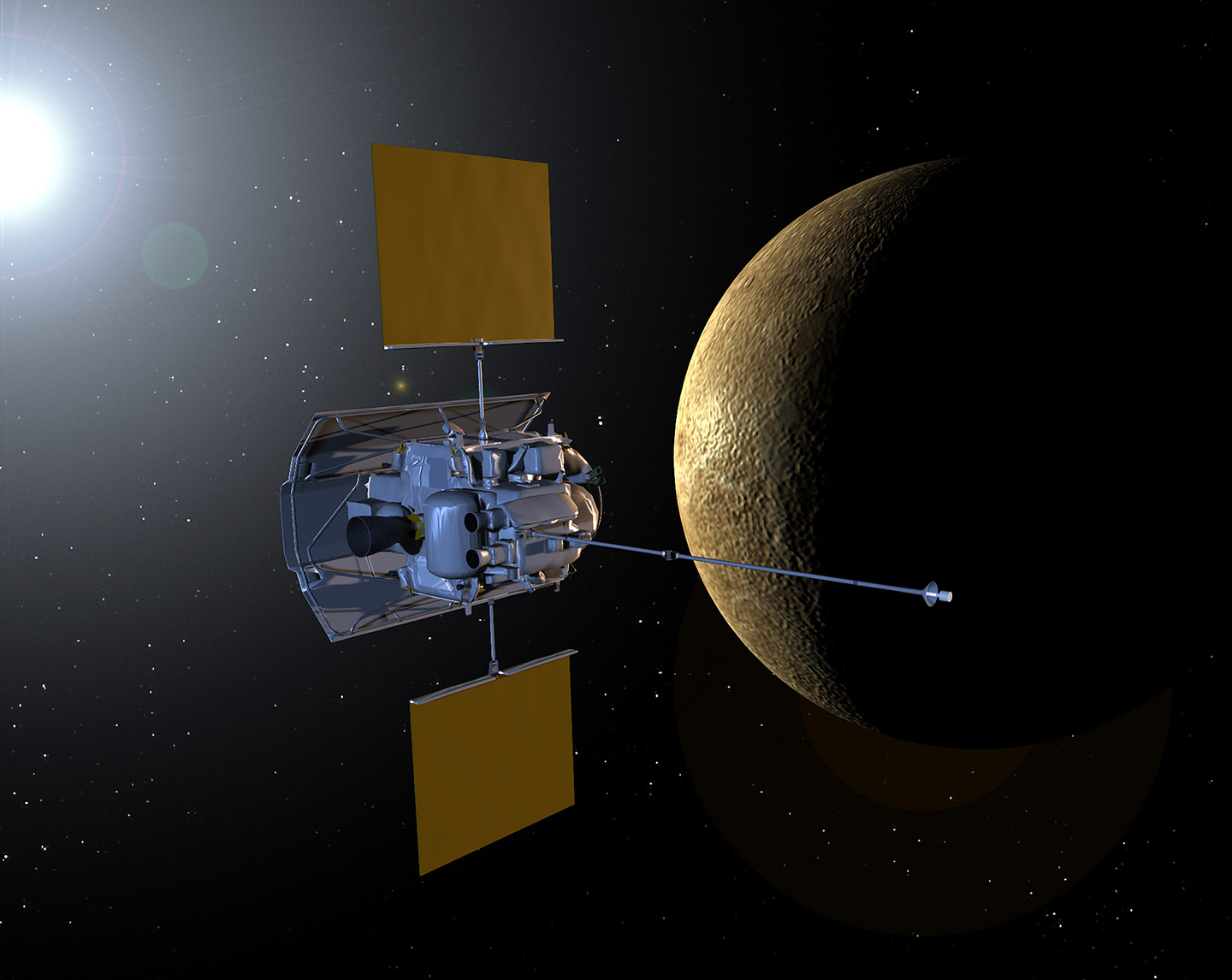
Artist's impression of the MErcury Surface, Space ENvironment, GEochemistry, and Ranging (MESSENGER) spacecraft in orbit at Mercury. MESSENGER is scheduled to launch from Cape Canaveral Air Force Station, Fla., in July 2004 and begin a yearlong orbital study of Mercury in March 2011. Though the Sun is up to 11 times brighter at Mercury than we see on Earth and surface temperatures can reach about 450 degrees Celsius (about 840 degrees Fahrenheit), MESSENGER's instruments will operate at room temperature behind a sunshade of heat-resistant ceramic fabric. The spacecraft will also pass only briefly over the hottest parts of the surface, limiting exposure to heat reradiated from the planet.
Credit: NASA/Johns Hopkins University Applied Physics Laboratory/Carnegie Institution of Washington
MESSENGER is the next launch in NASA's Discovery Program of lower cost, highly focused space science investigations. Sean C. Solomon of the Carnegie Institution of Washington leads MESSENGER as principal investigator; APL manages the mission for NASA's Office of Space Science.
More information on MESSENGER's journey and science mission is available at http://messenger.jhuapl.edu.
(Revised March 24, 2004)
Areas of Impact
The Applied Physics Laboratory, a division of The Johns Hopkins University, meets critical national challenges through the innovative application of science and technology. For information, visit www.jhuapl.edu.